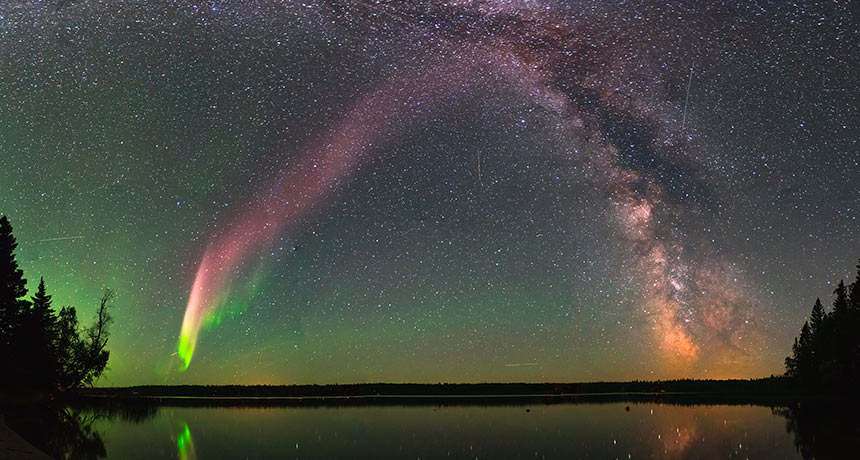STEVE the aurora makes its debut in mauve
Citizen scientists captured images of the newly found light show

STEVE APPEARS A purplish and green band of light known as STEVE, shown here with the Milky Way, is a new kind of aurora that appears in the sky during displays of the northern lights.
Krista Trinder